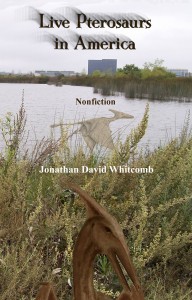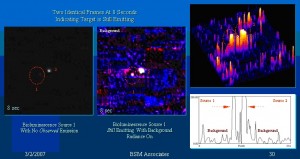Once in a while let’s consider some of the best articles on living pterosaurs, those especially deserving attention.
I’ve lived more than half a century in Southern California, but I have never seen a mountain lion in the wild. It’s not that I’ve never walked through a wilderness area; mountain lions keep hidden, most of the time. But a few Southern Californians do see them.
At the San Joaquin Wildlife Sanctuary, in Southern California, near Irvine, in the summer of 2007, a man was driving north from the university, with the ponds on his right. From the marshy area on his left a very strange flying creature flew across the road, right in front of him, flying into the sanctuary.
American eyewitnesses (1400) of pterosaurs
I have learned, over the years that I have promoted attention to the eyewitness evidences, that some vocal critics are overly anxious to discredit all those who promote the idea of living pterosaurs. I welcome comments on the eyewitness evidence itself, rather than weaknesses (real or wrongly-supposed) of the interviewers and investigators.
Marfa Lights and Min Mins (and ropens)
Come with me to Victoria, Australia, along Salisbury Road in Mt. Macedon. Notice, as we enter an open window, that Mr. Fred Silcock is sleeping in the easy chair by the fireplace. Now search for a thin brown book on the bookshelf. That’s the one; the spine says “The Min Min Light F.F. Silcock”. Notice the drawing of a glowing barn owl on the cover.
“The scientists of today think deeply instead of clearly. One must be sane to think clearly, but one can think deeply and be quite insane.” I believe Nikola Tesla was thinking clearly when he said that. I also believe that we need clear thinking in the scientists of today, at least as much as in the time of Tesla. It appears to me difficult to define, although its opposite appears easy to expose. Perhaps we should be grateful for extremes that help us to distinguish between foggy and clear thinking. I suggest a couple of examples.
Glowing Orbs of the Mekong River
What attracts hundreds of thousands of spectators, every October, to Nong Kai Province? The Naga Fireballs of Southeast Asia have attracted crowds for many years, and these strange glowing orbs have been seen emerging from the Mekong River for centuries.
. . . We know that some insects glow and some insects emerge from rivers to fly away. This may be a large bioluminescent insect.
Cryptozoology Book Live Pterosaurs in America
“The world’s greatest expert on chickens—that’s a fox. The details of that expertise culminate in picking bones, executed differently than, but for the same purpose as, the work of a fossil expert: to make a living. The hope differs: The paleontologist searches for ancient bones somehow protected from the destructive forces of time; the fox, for fresh meat, somehow unprotected by the farmer for a time. Interminable dogmatism keeps both of them searching: one for death anciently; the other, death soon-to-be.”




